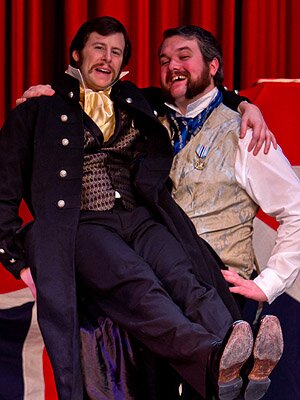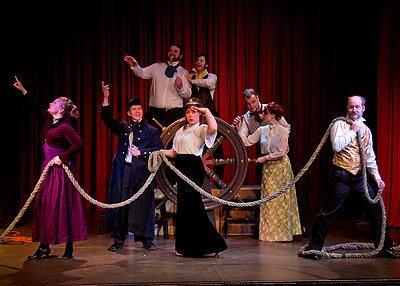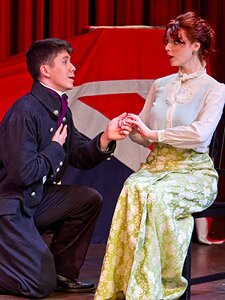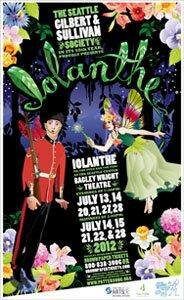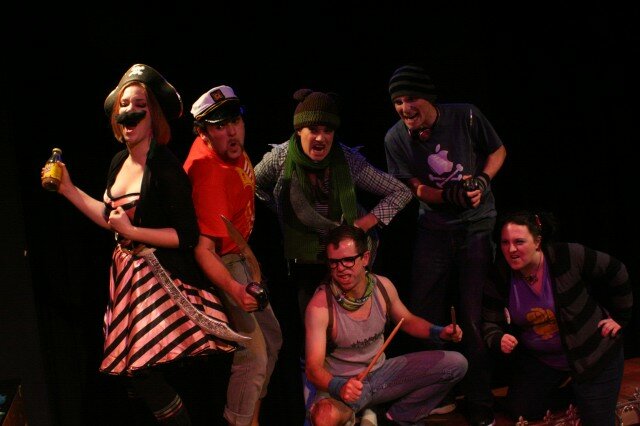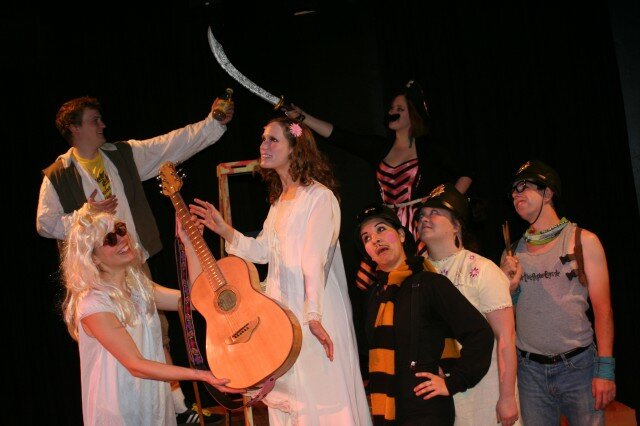Among the Gilbert and Sullivan comic operas, The Gondoliers is much the most political. “Venice in 1750 was so far removed from 19th-century England that W. S. Gilbert got more feisty with his political satire,” says Seattle Gilbert & Sullivan Society producer Mike Storie. (In today’s United States, the emphasis on republicanism may sound upside-down, but to the gondoliers themselves it meant equal opportunity and pay for everyone — not to mention down with monarchy. Queen Victoria was not amused.)
As the famously ironic phrase in one of Gondolier‘s songs goes, says Storie, “When everyone is somebody, then no one’s anybody!”
The Gondoliers (July 12 to 27 at the Bagley Wright Theatre; tickets) calls for 17 principal roles and no less than three prominent young couples, but Seattle G & S, now in its 59th season, has had no trouble finding singers for all those roles — though a couple of favorite performers are missing this year, thanks to work conflicts. We won’t hear Dave Ross singing patter songs or William Darkow’s resonant baritone this time around, but as in all the best companies, others are stepping in and nailing the performances. (This Friday, though, Dave Ross is narrating a musical preview of The Gondoliers on KING-FM at 9 p.m. that I for one don’t intend to miss.)
The tale is as absurd as all of the G & S libretti are, but has some of the canon’s most memorable, hummable and downright enchanting songs, as well as opportunities for Spanish dance and recognizable views of Venice. Yes, that’s right. Somehow Gilbert manages to elide Italy and Spain, or maybe he just has them side by side, but he also adds a mythical island he has borrowed from Cervantes. (Barataria appears in Don Quixote.)
Briefly, the story is of two popular gondolier brothers in Venice who have just chosen and married their sweethearts, only to discover that one of them, due to a mix-up at birth, is the King of Barataria. Until their mother is found, no one knows which is which, and the two have to go rule jointly in Barataria, without their wives, until the situation is straightened out. Meanwhile the Duke of Plaza-Toro arrives in Venice with his wife, daughter Casilda and ADC Luiz, telling the girl she was married in infancy to the King of Barataria, only now they don’t know which he is. She of course is in love with Luiz.
Everything is eventually disentangled and all ends happily, but not without a lot of dancing and singing.
One of the hallmarks of Seattle G & S is its efforts to be as accurate as possible, so it’s no surprise that flamenco dancer and teacher Maria Gitana is on board to choreograph the Spanish dances, using styles developed in Spain and popular in the 17th to 19th centuries. Right at the start we’ll see a dance in the Escuela Bolera style, with intricate footwork and stylized arm movements, and later the cachuca in the style of flamenco dance of Southern Spain. Never mind that we’ll see it with a backdrop of Venice!
As well as being one of the oldest G & S companies in the U.S., Seattle’s is also one of the best of its kind internationally. It has won several top awards at international gatherings of Gilbert & Sullivan companies all producing their best shows, and every year here we are privileged to see yet another wonderfully imaginative and polished production, replete with the topical allusions which have been slyly added to every show since the originals at the D’Oyly Carte Theatre in London in the late 1800s.
Much of this is due to the devoted crew who put this on. Just about everyone at Seattle G & S is a volunteer, and they put in countless hours. Producer Storie, set designer Nathan Rodda, carpenter Gary Webberley, stage director Christine Goff, and many others are steeped in this comic opera canon, knowledgeable and passionate about every detail, and always seem to be having a wonderful time doing it. It shows in their productions every time.
